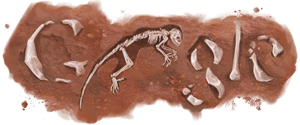
May 19, 2009—Meet “Ida,” the small “missing link” found in Germany that’s created a big media splash and will likely continue to make waves among those who study human origins.
In a new book, documentary, and promotional Web site, paleontologist Jorn Hurum, who led the team that analyzed the 47-million-year-old fossil seen above, suggests Ida is a critical missing-link species in primate evolution (interactive guide to human evolutionfrom National Geographic magazine).
(Among the team members was University of Michigan paleontologist Philip Gingerich, a member of theCommittee for Research and Exploration of the National Geographic Society, which owns National Geographic News.)
The fossil, he says, bridges the evolutionary split between higher primates such as monkeys, apes, and humans and their more distant relatives such as lemurs.
“This is the first link to all humans,” Hurum, of the Natural History Museum in Oslo, Norway, said in a statement. Ida represents “the closest thing we can get to a direct ancestor.”
Ida, properly known as Darwinius masillae, has a unique anatomy. The lemur-like skeleton features primate-like characteristics, including grasping hands, opposable thumbs, clawless digits with nails, and relatively short limbs. …read more at news.nationalgeographic.com


